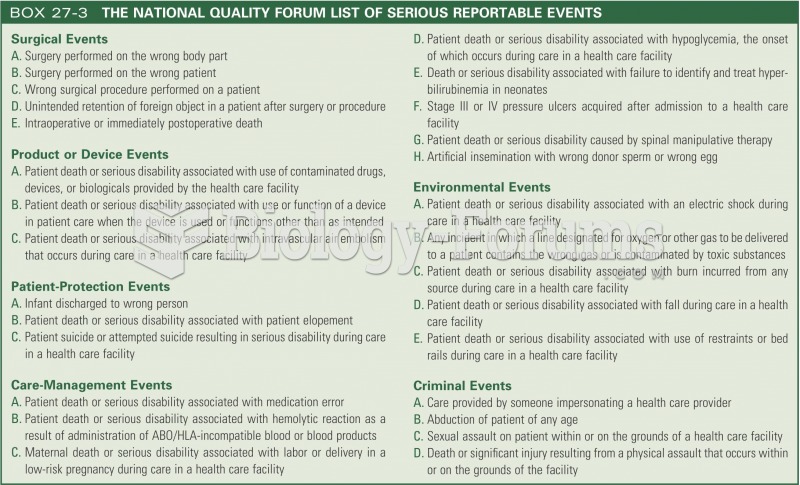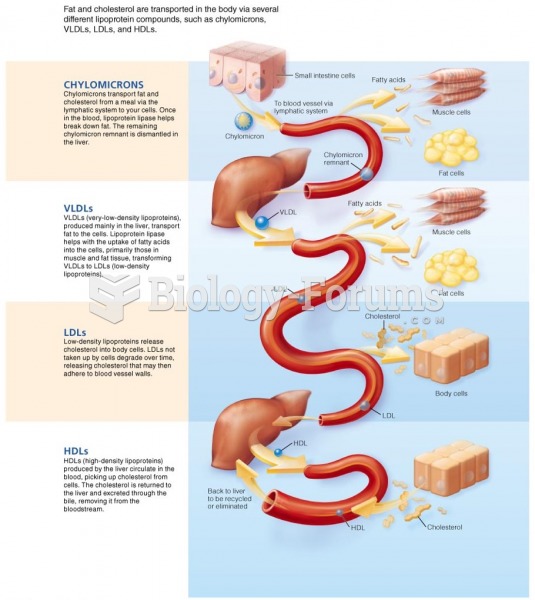Answer to Question 1
A healthy GI tract is home to a vibrant community of some 100 trillion microbesbacteria, viruses, fungi, protozoa, and other microorganisms, collectively known as the human microbiome. Weighing less than a pound in total, these microbial cells outnumber the body's cells tenfold. The bacteria alone represent more than 400 different species and subspecies. The prevalence of different microbes in various parts of the GI tract depends on such factors as pH, peristalsis, diet, and other microbes. Relatively few microbes can live in the low pH of the stomach with its somewhat rapid peristalsis, whereas the neutral pH and slow peristalsis of the lower small intestine and the large intestine permit the growth of a diverse and abundant population.
Recent research has revealed that a person's health reflects the relative stability, disturbance, and resilience of the microbiome. Its composition and activity may contribute to dozens of common diseases, including inflammatory bowel disease and obesity.
The microbiome population and environment change dramatically in response to dietboth in the short term (daily meals) and in the long term (habitual diet patterns). Consider, for example, that fibers that cannot be digested by the human body provide a major source of energy for bacteria, fostering their growth. As GI bacteria digest and metabolize fibers and other nutrients, they produce compounds such as short fragments of fat, which can influence energy metabolism and immunity. Fibers and some other food components are called prebiotics because they encourage the growth and activity of bacteria. Research suggests that prebiotics may reduce the risk of GI infections, inflammation, and disorders; increase the bioavailability of nutrients; and regulate appetite and satiety.
Some foods contain probiotics, live microbes that change the conditions in the GI tract in ways that seem to benefit health. For example, yogurt contains Lactobacillus and other living bacteria. The potential GI health benefits of probiotics or products of their metabolism include helping to alleviate diarrhea, constipation, inflammatory bowel disease, ulcers, allergies, lactose intolerance, and infant colic; enhance immune function; and protect against colon cancer. Research studies continue to explore how diet influences GI bacteria and which foodswith their prebiotics and probioticsaffect GI health. In addition, research studies are beginning to reveal several health benefits beyond the GI tractsuch as improving blood pressure and immune responses.
Bacteria in the GI tract also produce several vitamins, including biotin, folate, pantothenic acid, riboflavin, thiamin, vitamin B6, vitamin B12, and vitamin K. Because the amount produced is insufficient to meet the body's needs, these vitamins are considered essential nutrients that must be provided by the diet.
Answer to Question 2
The routing of the blood leaving the digestive system has a special feature. The blood is carried to the digestive system (as to all organs) by way of an artery, which (as in all organs) branches into capillaries to reach every cell. Blood leaving the digestive system, however, goes by way of a vein. The hepatic portal vein directs blood not back to the heart but to another organ, the liver. This vein branches into a network of large capillaries so that every cell of the liver has access to the blood. Blood leaving the liver then collects into the hepatic vein, which returns blood to the heart.
The liver's placement ensures that it will be first to receive the nutrients absorbed from the GI tract. In fact, the liver has many jobs to do in preparing the absorbed nutrients for use by the body. Of all the body's organs, the liver is the most metabolically active. In addition, the liver defends the body by detoxifying substances that might cause harm and preparing waste products for excretion. This is why, when people ingest poisons that succeed in passing the first barrier (the intestinal cells), the liver quite often suffers the damagefrom viruses such as hepatitis, from drugs such as barbiturates or alcohol, from toxins such as pesticide residues, and from contaminants such as mercury.
The lymphatic system provides a one-way route for fluid from the tissue spaces to enter the blood. Unlike the vascular system, the lymphatic system has no pump; instead, lymph circulates between the cells of the body and collects into tiny vessels. The fluid moves from one portion of the body to another as muscles contract and create pressure here and there. Ultimately, much of the lymph collects in the thoracic duct behind the heart. The thoracic duct opens into the subclavian vein, where the lymph enters the bloodstream. Thus nutrients from the GI tract that enter lymphatic vessels (large fats and fat-soluble vitamins) ultimately enter the bloodstream, circulating through arteries, capillaries, and veins like the other nutrients, with a notable exceptionthey bypass the liver at first.







